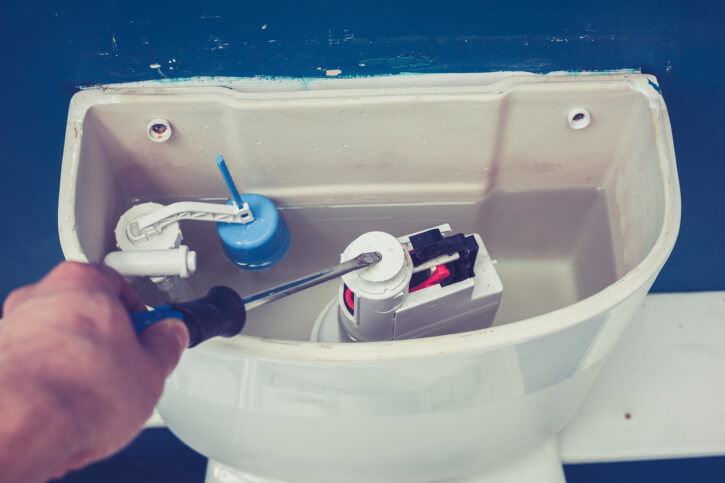
Top 10 Reasons for a Leaky Toilet
One of the most common reasons for water leaks in your home is a leaky toilet. There are many causes for a leaky toilet, and it can be helpful to know some of the most common reasons so you can avoid them.
- Worn washers or bolts: Worn washers or bolts may contribute to a leaky toilet. Two large bolts keep the tank attached to the bowl, along with a three-inch gasket. If any of these components falter, your toilet leaks water onto the floor.
- Tank-bowl gasket: This is a three-inch gasket that, in conjunction with two large bolts, washers, and nuts, keeps the bowl attached to the tank and leak-free. If the gasket or bolts corrode due to age or chemical buildup, a leak develops.
- Corrosion: Corrosion can develop at any place in your pipes or toilet assembly and can result from impurities in the water, age, chemical reactions, or a combination of all three. Corrosion is potentially the most physically damaging thing that can happen to your plumbing fixtures and pipes, since it typically occurs from within them.
- Rusty pipe: Rust is a result of corrosion and can only affect the metallic portions of a toilet assembly. Because many parts of a toilet are underwater continually, rust development is often a result from submerged components.
- Cracked tank: The tank is a large container where the water flows into the bowl when you flush the toilet. If the tank cracks and begins to leak water, you must replace it.
- Cracked bowl: If the bowl of your toilet cracks for any reason, you must replace your toilet immediately. A cracked bowl can cause property damage and waste a lot of water.
- Float working improperly: The float assembly in your tank is usually a large plastic ball attached to a long metal rod that floats in the tank of your toilet. When the float assembly stops working, the toilet runs continuously and may overflow.
- Worn/loose feed line: This is the tube or pipe that gives water to the toilet when you flush it. If the connection becomes lose or worn out over time, a leak may develop.
- Fill valve: If your leak is the result of a fill valve failure, replace the gasket and the washer that keeps the fill valve assembly watertight.
- Overflow tube obstructed: The overflow tube is a tube that should relocate the water if the tank starts to overflow. If your toilet tank overflows and the overflow tube has an obstruction, water spills onto the floor.
If you have a leaky toilet, you should hire a professional plumber to address it. A professional plumber may be able to repair some leaks, and may have to replace your toilet for others. A leaky toilet is important to remedy because leaks can cause massive property damage and cost you money in wasted water. For more information about finding and fixing a leaky toilet, contact a professional plumber.